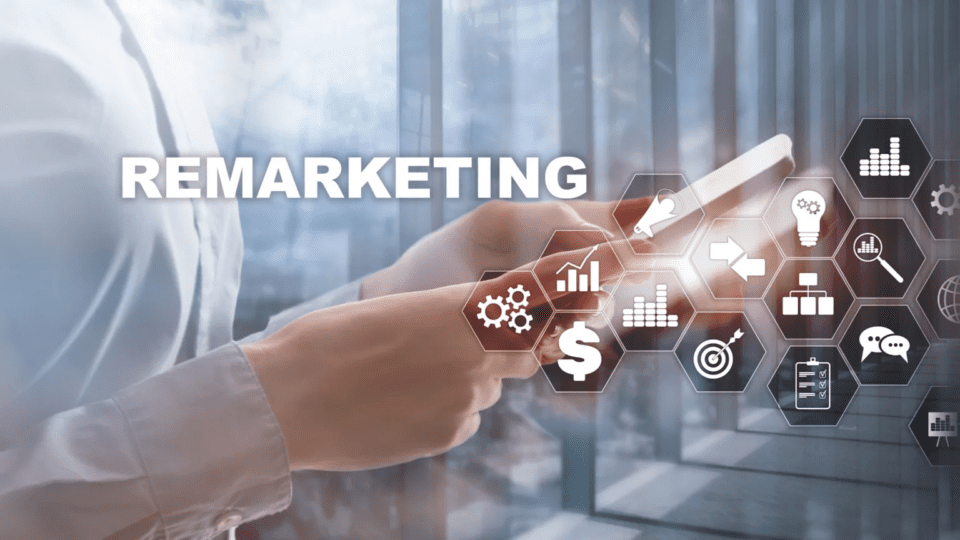In the digital age, remarketing plays a key role in a business’s overall marketing strategy. Understanding what remarketing is and how to implement it effectively will help businesses reach potential customers again, increase conversion rates and optimize advertising budgets. This article will provide a comprehensive view of remarketing along with the 4 most effective implementation tips.
What is Remarketing? Examples
Remarketing is a marketing strategy that retargets people who have interacted with your brand through digital channels. This is a marketing method that allows businesses to show ads to customers who have visited your website, viewed your products, but have not made a purchase.
For example, when a customer visits your shoe website and sees a pair of running shoes but doesn’t buy one, they’ll see ads for the same shoes or similar products later when they browse Facebook, YouTube, or read online.
The Importance of Remarketing in Business
In the context of increasingly fierce digital market competition, Remarketing has become an indispensable tool for every business. Let’s find out the benefits that this marketing method brings!
Increase Brand Awareness
Research from Google has shown that customers need to interact with a brand an average of 7 times before making a purchase decision. Remarketing helps keep your brand top of mind by showing relevant ads across different platforms. This not only creates natural touchpoints but also helps build customer trust in your brand.
Remarketing offers a huge advantage in strengthening brand recognition by leveraging multiple ad impressions across channels that customers frequently visit. When a brand appears repeatedly in multiple places, from social media to news sites, customers are more likely to remember and recognize the brand. In particular, this reappearance process helps customers naturally engage with the brand, even when they do not intend to make an immediate purchase, thereby increasing the likelihood of choosing the brand in the future.
Optimize Marketing Costs
Remarketing is an effective tool to optimize advertising budgets thanks to the ability to target the right audience that has shown a certain interest in a product or service. Instead of spending budget on reaching new customers who have never interacted, remarketing allows you to focus resources on people who have visited your website or taken an action related to your brand. This reduces the cost per ad impression or per click because the campaigns are only targeting a higher potential customer base. Reaching the right group of potential customers increases the possibility of conversion, reducing the total cost of advertising while still achieving marketing goals.
In addition to saving money, remarketing also helps increase ROI (Return on Investment) by optimizing conversions. When ads are continuously shown to people who have previously shown interest, the likelihood of them returning and making a transaction is higher. Remarketing campaigns allow for tracking user behavior, making it easy to adjust messages and frequency of appearance to suit each specific customer group. As a result, brands not only increase recognition but also have the opportunity to optimize profits on each advertising investment, because reaching a group of people with a high propensity to buy increases conversion rates and increases the long-term value of customers to the business.
Increase Conversion Rate
Remarketing allows businesses to reach out to users who have shown interest in a product or service but did not complete a purchase. By reminding customers of the products they viewed, remarketing reignites their initial interest and helps boost conversions. Ads that are shown after a user has left a website not only increase the likelihood of them returning, but also help reduce the likelihood of potential customers abandoning their shopping carts without making a purchase. This is especially important as users tend to browse multiple options before making a decision. Re-appearing in front of them in a timely manner will help make your brand a top choice.
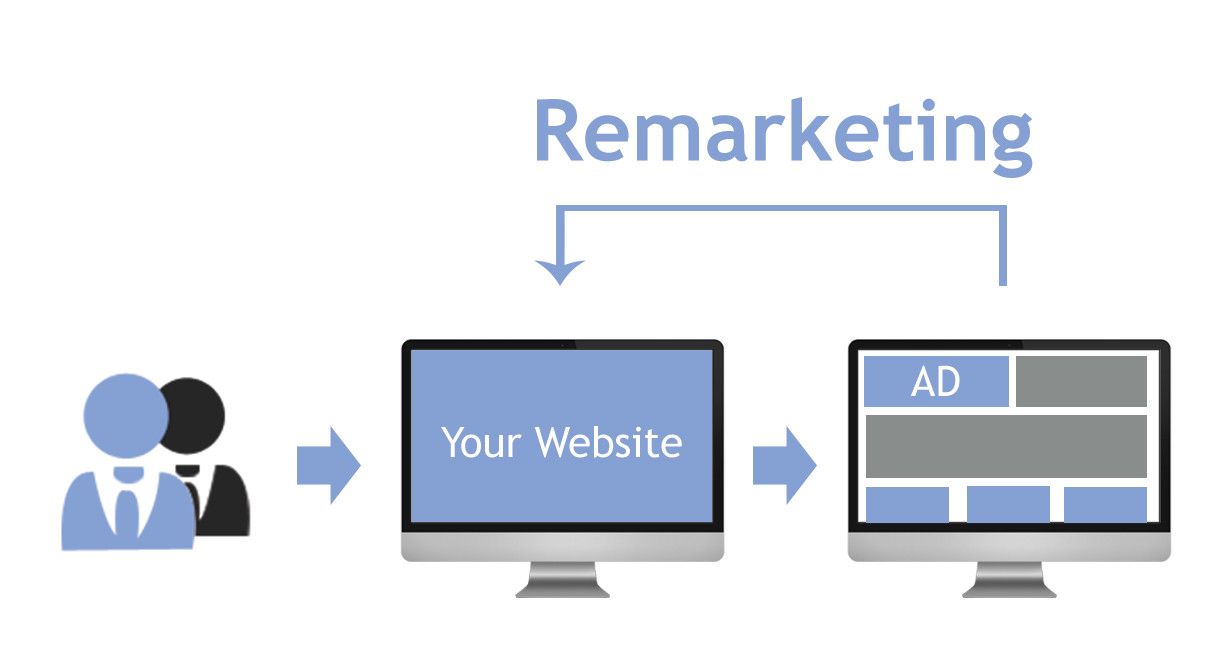
Through the process of analyzing user behavior, businesses can better understand the specific interests and needs of each customer group. Companies can create personalized messages, such as suggesting similar products or providing offers that match previous shopping behavior. This makes advertising more useful and attractive, instead of just general messages that do not create a connection. When customers see that advertising meets their needs and desires, they tend to be interested and easily convert into real customers. This personalization not only enhances the user experience but also contributes to the success of marketing campaigns, helping to significantly improve conversion rates for businesses.
Increase Your Reach to Potential Customers
Remarketing helps brands reach potential customers at scale thanks to Google’s extensive Display Network, which includes more than 2 million websites and apps. Ads can appear anywhere customers visit, from news sites, blogs, forums to entertainment apps or social networks. This gives brands the opportunity to create a continuous presence in users’ daily lives, increasing the number of touchpoints between customers and the brand. This network is also not limited to a specific region but has global reach, helping brands expand their customer base without significantly increasing their advertising budget. As a result, brands can both increase their recognition and have the opportunity to attract more potential customers in a short time.
The ability to customize audiences in remarketing campaigns plays a key role in maximizing the effectiveness of reaching potential customers. Thanks to user behavior measurement and analytics tools, businesses can clearly identify the group of customers who have interacted with the brand, thereby creating audience lists appropriate to each stage of the purchase journey. For example, people who have visited a product page but have not purchased can be targeted with promotional messages or special offers, while users who have only viewed the home page will be reminded with general brand introduction ads. This customization helps optimize advertising costs, focus on a group of audiences with a high probability of conversion, and improve the user experience by receiving messages that are relevant to their needs and interests.
Increasing Competitiveness in the Digital Market
In a digital world where consumers are constantly bombarded with information and advertisements, remarketing helps businesses stay relevant and make a lasting impression on potential customers. By targeting users who have already interacted with your product or website, businesses can retain their attention and increase the likelihood of customers returning. Unlike traditional advertising, remarketing delivers messages and offers tailored to each stage of the consumer’s buying journey, making your brand stand out and less likely to be forgotten among hundreds of other options. This constant and subtle presence helps businesses maintain their competitive edge, especially when consumers are faced with many similar options.
Remarketing not only maintains brand awareness but also refines the sales process to optimize conversion rates. By using data from previous interactions, businesses can segment customers and provide more personalized ads that match the needs and interests of each user group. It helps speed up the sales process and eliminate obstacles in the customer decision process, increasing the rate of successful purchases. Remarketing has become an important tool for businesses to increase sales efficiency, reduce the cost of reaching new customers and maintain a competitive advantage over competitors in the same field.
Remarketing Targets
Accurately identifying your target audience is key to the success of your remarketing campaign. According to Google Ads statistics, campaigns with detailed audience segments are 45% more effective than mass advertising.
Group of Customers Visiting the Website
This is the most basic remarketing audience, consisting of people who have visited your website but have not yet completed the desired conversion. This group is often segmented into smaller segments based on pages viewed, time spent on the page, and engagement with content.
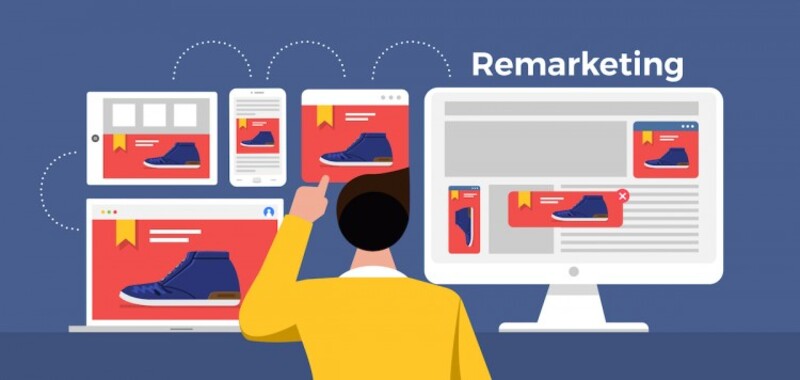
Customer Groups with High Frequency of Access
Remarketing is especially effective with repeat visitors who show a high level of interest in your product or service. Setting a threshold for visits (N) should be based on your buying cycle analysis and industry specifics.
High-Value Customer Group
People who have spent money on the website are a very potential target group for remarketing campaigns. Marketing strategies for this group often focus on cross-selling (a technique of selling additional products to the product the customer has chosen) and up-selling (a technique of encouraging customers to choose a premium or more valuable version of the product they have chosen) with personalized offers based on purchase history.
Customer Group From Organic Sources
Remarketing to users who find your website through natural sources (not Google ads) is cheaper and more effective. Data from SEMrush shows that the conversion rate of this group is 23% higher than traffic from paid ads. Because this group of customers often has a real need and actively searches for information about products/services.
Customer Groups by Purchase Stage
Segmenting your remarketing audience by stage in the customer journey helps optimize campaign effectiveness. It includes people who are researching information (awareness), comparing products (consideration), and moving towards a purchase decision (decision).
How Does Remarketing Work?
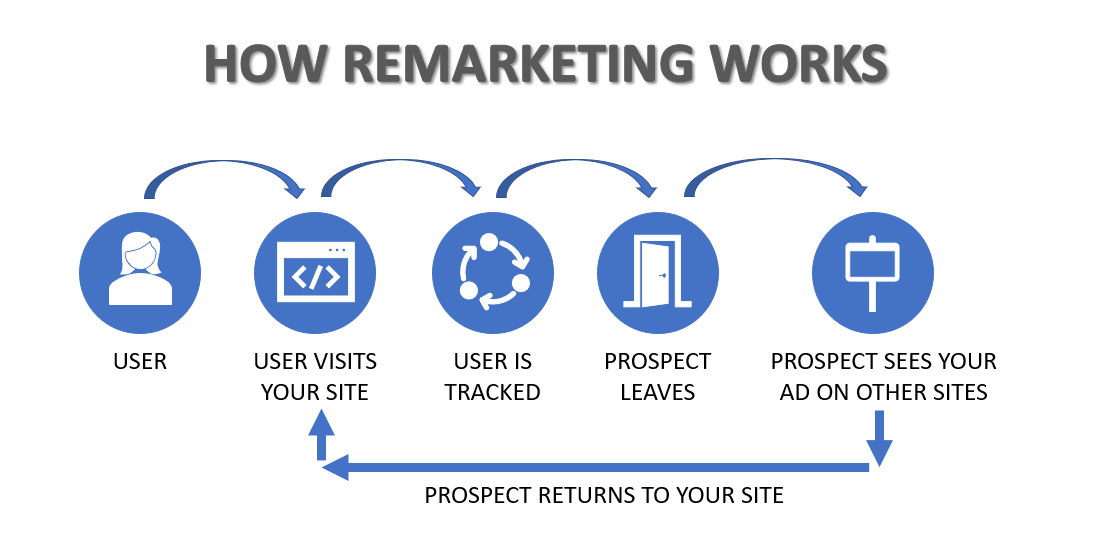
After understanding what remarketing is, let’s explore with JobsGO how it works on different platforms!
Remarketing Process on Google
The first step is to integrate Google Remarketing Tag or Google Analytics Tag into your website. This code plays an important role in capturing and analyzing website visitor behavior.
Once the data is in place, the system will categorize users into distinct groups based on how they interact with the website. For example, the group that viewed product details but did not make a transaction.
When these groups of people browse the internet, advertising content will appear on the Google Display Network or in Search Engine results. The highlight is the ability to personalize marketing messages according to each customer segment, especially the application of Dynamic Ads to display the right products that customers are interested in.
Facebook Remarketing Process
Facebook plays a key role in capturing user information, from product viewing behavior to adding to cart actions. This information helps build Custom Audiences – groups of people segmented based on their level of engagement with digital content.
When these users visit Facebook, Instagram or Messenger, advertising content will be displayed according to their interests and preferences. Ad formats vary from static images to vivid videos .
Performance optimization is done through A/B testing, allowing comparison and selection of the ad version that delivers the best results.
Remarketing Process on TikTok
TikTok Pixel collects and analyzes data about how users interact with your website, including actions like browsing products, adding to cart, and initiating checkout.
This information is converted into Custom Audiences, which help to precisely define the group of people who are already interested in the brand. The platform is characterized by a focus on short, creative, and impactful video content.
The Lookalike Audiences feature on TikTok also helps detect new users with similar characteristics to current customers, thereby expanding reach and improving campaign effectiveness.
Benefits That Remarketing Brings To Businesses
Remarketing has proven to be highly effective in optimizing costs and increasing sales for businesses. The specific benefits that remarketing brings are:
Save on Budget
Remarketing allows businesses to focus on customers who have previously shown interest in a product or service, instead of investing in advertising to the entire market. Thanks to data on user behavior, businesses can identify customer segments with a higher likelihood of purchasing, thereby adjusting their budgets appropriately and avoiding wasting on non-potential customers. As a result, advertising budgets are used more effectively, helping businesses achieve high conversion rates without increasing advertising costs.
Businesses can also control when ads are shown and adjust their bidding strategies based on the time or state of their customers. For example, ads can be shown more frequently to users who have recently visited the site, while being shown less frequently to users who have left the site for a long time. This not only optimizes costs, but also ensures that ads reach users at the most appropriate time, increasing engagement and conversion without spending more budget.
Increase Conversion Rate
Remarketing plays a vital role in boosting conversion rates by targeting users who have shown interest in a product or service but have not yet completed a purchase. By re-displaying relevant ads, businesses can stimulate users’ shopping needs, thereby motivating them to take actions such as placing an order, signing up, or contacting a consultant. This continued outreach not only increases conversion rates, but also optimizes advertising resources by targeting potential customers who are more likely to take action.
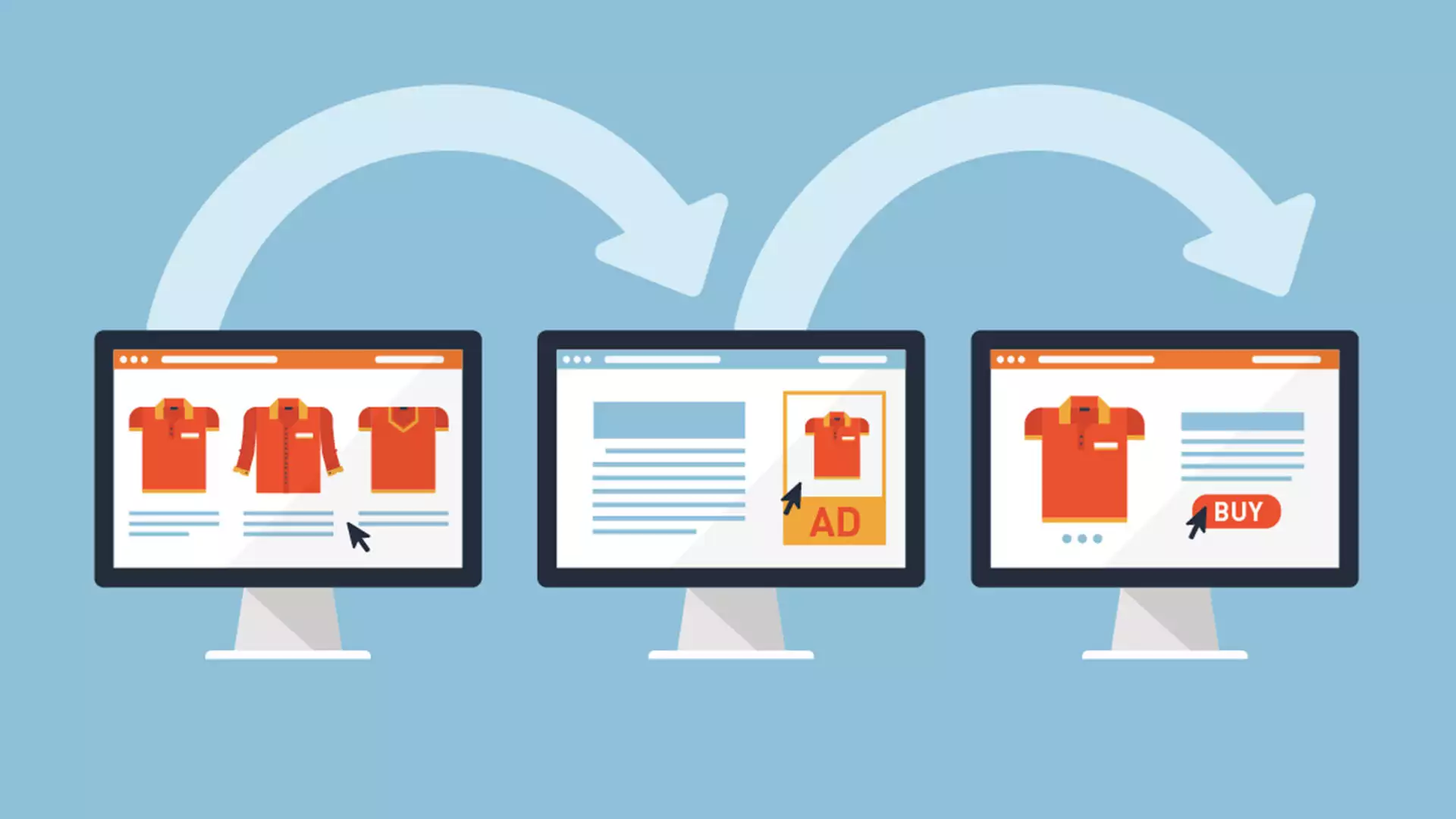
Remarketing also helps reduce cart abandonment by subtly reminding customers of previously viewed items and offering compelling incentives to encourage them to return to complete their purchase. Businesses can create a sense of urgency and increase the appeal of items left in their carts. Carefully designed remarketing campaigns make customers feel valued and increase the likelihood that they will take action, thereby increasing conversion rates for businesses.
Increase Brand Awareness
Remarketing creates continuous brand touchpoints with potential customers. During the shopping journey, customers may be exposed to multiple brands at the same time. Remarketing is an effective tool to help businesses maintain a consistent presence by creating continuous touchpoints with potential customers. By appearing at the right times and places, from advertising on websites to social media platforms, brands will create a deep impression, making customers remember every time they consider choosing a product. It is this strategic repetition that helps customers gradually form a clearer awareness of the brand, increasing the likelihood of returning and making a purchase in the future.
Remarketing goes beyond simply reminding customers about your brand and encourages them to engage in interactive activities, from clicking on ads to sharing product information with friends or on social media. This constant presence gradually creates a positive environment where customers feel closer to the brand. When they feel like they belong to a common community of users, customers tend to become natural advocates, willing to share their personal experiences and recommend products to others. This effect not only helps brands expand their influence but also creates a source of long-term loyal customers, contributing to increased recognition and trust from the market.
Effective Remarketing Methods
You can refer to the 3 most popular remarketing methods today:
Facebook Remarketing
Facebook offers a variety of fine-tuning tools to help you reach your target audience precisely.
- Creating custom lists based on online activities like adding products to cart, viewing specific item details, or engaging with content on Facebook is highly effective.
- Lookalike Audience: Expand your reach by finding users who share characteristics similar to those of your current customers.
- Dynamic Product Ads: Automatically display products that match viewer interests, based on previous interaction history.
- Video Remarketing: Create opportunities to reconnect with people who have been interested in your video content.
- Event Remarketing: Maintain the interest of event registrants.
Google Remarketing
- Google Display Network (GDN): Displays ads on multiple partner websites, targeting users who have visited the website but have not yet taken the desired action. Ads appear while browsing the web, watching YouTube videos, or using applications in the Google ecosystem.
- Search Remarketing: Optimize ad display position when users search for related keywords.
- Remarketing Lists for Search Ads (RLSA): Adjust search advertising strategies based on website browsing behavior, increasing the effectiveness of reaching potential audiences.
TikTok Remarketing
- TikTok Pixel: Create Custom Audiences from people who have interacted with your content or website. This tool helps show relevant ads to people who are interested but have not taken a specific action.
- Lookalike Audiences: Expand your reach to users who share similar characteristics to your existing customers.
- Video Ads: Take advantage of the short video trend, create creative and engaging content to increase conversion rates.
Steps to Implement Remarketing
To understand how to implement remarketing on different platforms, you can apply the following steps:
Detailed Guide to Deploying Remarketing with Google
Step 1: Initialization and integration phase
- Access and activate your advertising account on the Google platform.
- Set up analytics and measurement tools through Analytics platform
- Integrate specialized tracking code:
-
- Install tracking code from Analytics or integrate a code snippet specifically for Remarketing.
- Make sure the code is installed in the correct place on your website to collect user information.
Step 2: Build your target audience
- Navigate to the “Audience Manager” customer segment manager
- Create new “Audience Lists” via the “+” button
- Choose segmentation based on website access behavior:
-
- Identify specific classification criteria.
- Set parameters for data retention time.
- Give an identifiable name to the group of objects.
Step 3: Design and run the campaign
- Go to the advertising campaign management section (Select “New Campaign”)
- Choose the appropriate display channel:
-
- Display Network
- Search Network
- Integrate the created audience list into the campaign in the “Audiences” section
- Configure important parameters:
-
- Budget allocation.
- Define conversion goals.
- Design advertising content and images.
Step 4: Evaluate and improve effectiveness
- Monitor performance metrics via dashboard.
- In-depth analysis of user behavior via Google Analytics.
- Adjust and optimize factors:
-
- Advertising content.
- Target keyword phrase.
- Cost allocation.
- Target audience.
- Continuously updated and improved based on real data.
Detailed Instructions for Deploying Remarketing with Facebook
Step 1: Set up Facebook Pixel
- Launch Facebook Ads Manager with your ad account.
- Go to “Events Manager” to access “Pixels”.
- Deploy tracking tool:
-
- Create a dedicated Facebook Pixel.
- Integrate source code into website.
- Confirm the tracking tool is working.
- Check user data flow.
Step 2: Segment your target audience
- Navigate to the Audiences section in the “Ads Manager” management interface.
- Start the new “Custom Audience” process.
- Building criteria for classifying Website traffic:
-
- Define target behavior.
- Set up tracking time.
- Identify specific interactions.
- Assign identification labels to groups of objects.
Step 3: Build an outreach plan
- Activate a new campaign in Campaigns, select “Create”.
- Set marketing goals: Optimize for “Conversions” or aim for “Traffic”.
- Integrate predefined Custom Audiences.
- Campaign Framework Design:
-
- Allocation of financial resources
- Select display platform
- Ad content format
Step 4: Manage and improve performance
- Monitor metrics in Ads Manager.
- Apply Facebook Analytics for in-depth analysis.
- Continuous optimization:
-
- Implement A/B Testing.
- Adjust budget allocation.
- Improve creative content.
- Refine targeting.
- Evaluate and update strategies based on real data.
Campaigns need to be operated flexibly, adapt to market feedback and continuously optimized for maximum effectiveness.
Detailed Instructions for Deploying Remarketing with Tiktok
Step 1: Create TikTok Pixel
- Access the TikTok Ads Manager system.
- Exploit the tracking tool in the “Assets” section:
-
- Go to Event Management section.
- Create a dedicated TikTok Pixel.
- Integrate source code into website.
- Authenticate data flow from user.
- Check the stability of the tracking system.
Step 2: Build customer segments
- Explore the Audiences feature in “Assets”.
- Setting up “Website Traffic”:
-
- Define target access behavior.
- Specify data retention period.
- Set object filter conditions.
- Classify and label each group
- Store segment information with recognizable names
Step 3: Deploy advertising campaign
- Start the new Campaign creation process
- Define specific marketing goals: Focus on “Conversions” or prioritize “Traffic”.
- Integrate “Custom Audience” in “Ad Group”.
- Detailed configuration parameters:
-
- Allocate budget appropriately.
- Choose where to display ads.
- Content format (video/carousel).
- Creative message design.
Step 4: Manage and optimize performance
- Monitor metrics in TikTok Ads Manager:
-
- Track conversion rates.
- Cost per result analysis.
- Evaluate user interactions.
- Continuous adjustment:
-
- Upgrade creative content.
- Optimize budget allocation.
- Refine the object group.
- Test multiple ad formats.
Secrets to Running a Successful Remarketing Campaign
An effective Remarketing campaign requires a combination of many factors and appropriate strategies such as:
Focus on Brand Highlights
In an increasingly competitive business environment, creating a unique brand identity is more important than ever. This can come from superior product quality, dedicated customer service, or unique core values. When remarketing, highlighting these strengths in advertising content will help increase brand recognition and recall in the minds of customers.
You need to focus on building a consistent brand image across all touchpoints. This includes maintaining consistency in color, font, tone of voice, and communication messages. This consistency not only enhances brand recognition but also creates trust and professionalism in the eyes of customers.
Product Recommendation Optimization
Showing the right products to the right audience is the key to a successful Remarketing campaign. Thoroughly analyzing data on user behavior, search and purchase history helps you make the most suitable product recommendations. In particular, leveraging AI and machine learning technology to predict customer needs and preferences is highly effective.
You need to pay attention to diversifying your product portfolio, avoiding focusing too much on a specific item. This strategy not only increases the chance of conversion but also helps customers discover more potential products in the brand’s portfolio.
Choosing the Right Time
Timing is key to the effectiveness of your remarketing campaign. Carefully studying your target audience’s online activity times helps optimize your advertising budget. For example, for office-based customers, lunch breaks or after-hours often yield higher engagement rates.
At the same time, you need to consider the shopping cycle and decision-making time of each customer segment. For example, back-to-school season, holidays or special events during the year, adjusting the frequency and advertising content to suit each stage will improve the effectiveness of reach and conversion rate.
Optimizing Incentive Policy
Using coupons and other incentives in your remarketing campaigns should be done strategically and selectively. Rather than offering blanket offers, it is more effective to personalize coupons based on each customer’s shopping behavior and values. This not only increases conversion rates but also makes customers feel special.
At the same time, you need to set up a system to track and evaluate the effectiveness of each type of promotion. You should analyze the rate of discount code usage, average order value and customer return rate to help optimize future promotion strategies. Limiting the time of use of discount codes also creates urgency, promoting faster purchase decisions.
Distinguishing Remarketing and Retargeting
In the field of Digital Marketing, many people often confuse Remarketing and Retargeting. Although both aim to re-reach potential customers, they have some differences such as:
| Criteria | Remarketing | Retargeting |
| Define | Remarketing strategies focus on building relationships with customers through email marketing and direct communication channels. | Advertising technique that targets users who have interacted with a website/app through banner and display ads |
| Reach | Usually limited to existing or past customer lists | Broader, including people who are new to your website or interacting with your brand |
| Media channels | Mainly via email, SMS or direct call | Display on advertising networks such as Google Display Network, Facebook Ads, TikTok Ads |
| Main objective | Increase customer loyalty and lifetime value | Drive conversions and increase purchase completion rates |
| Data collection method | Use information from customer database (CRM) | Relying on cookies and pixel tracking |
| Time of execution | Usually a long-term, ongoing strategy | Shorter term, focus on specific campaigns |
| Expense | Lower due to leveraging existing channels | Higher due to paying for advertising space |
| Measure performance | Email open rates, engagement, repeat order value | Campaign click-through rate, conversion, ROI |
| Personalization | High, based on purchase history and interactions | Average, focuses on recent browsing behavior |
| Technical requirements | High, based on purchase history and interactions | More complicated, need to install and manage tracking code |
Hopefully, after reading this article, you have understood what remarketing is. This is an effective marketing tool that helps businesses increase conversion rates and optimize advertising costs. With the right strategy and continuous optimization, remarketing will be the key to helping your business develop sustainably in the digital age.
Frequently Asked Questions
1. What Is The Optimal Time For A Remarketing Campaign?
Usually 30-90 days depending on the purchase cycle.
2. Can Remarketing Be Done On Multiple Platforms At The Same Time?
Maybe, but make sure the message is consistent and doesn’t spam users.
3. How to Avoid Annoyance of Customers with Remarketing?
You need to set the appropriate display frequency and stop advertising after the customer has made a purchase.
4. Which Remarketing Channel Should I Start With?
Google Ads and Facebook are the two most popular channels to start with.
5. Is Remarketing Effective for Every Industry?
Remarketing is suitable for most industries but requires adjusting the strategy accordingly.
Comment Policy: We truly value your comments and appreciate the time you take to share your thoughts and feedback with us.
Note: Comments that are identified as spam or purely promotional will be removed.
To enhance your commenting experience, consider creating a Gravatar account. By adding an avatar and using the same e-mail here, your comments will feature a unique and recognizable avatar, making it easier for other members to identify you.
Please use a valid e-mail address so you can receive notifications when your comments receive replies.
